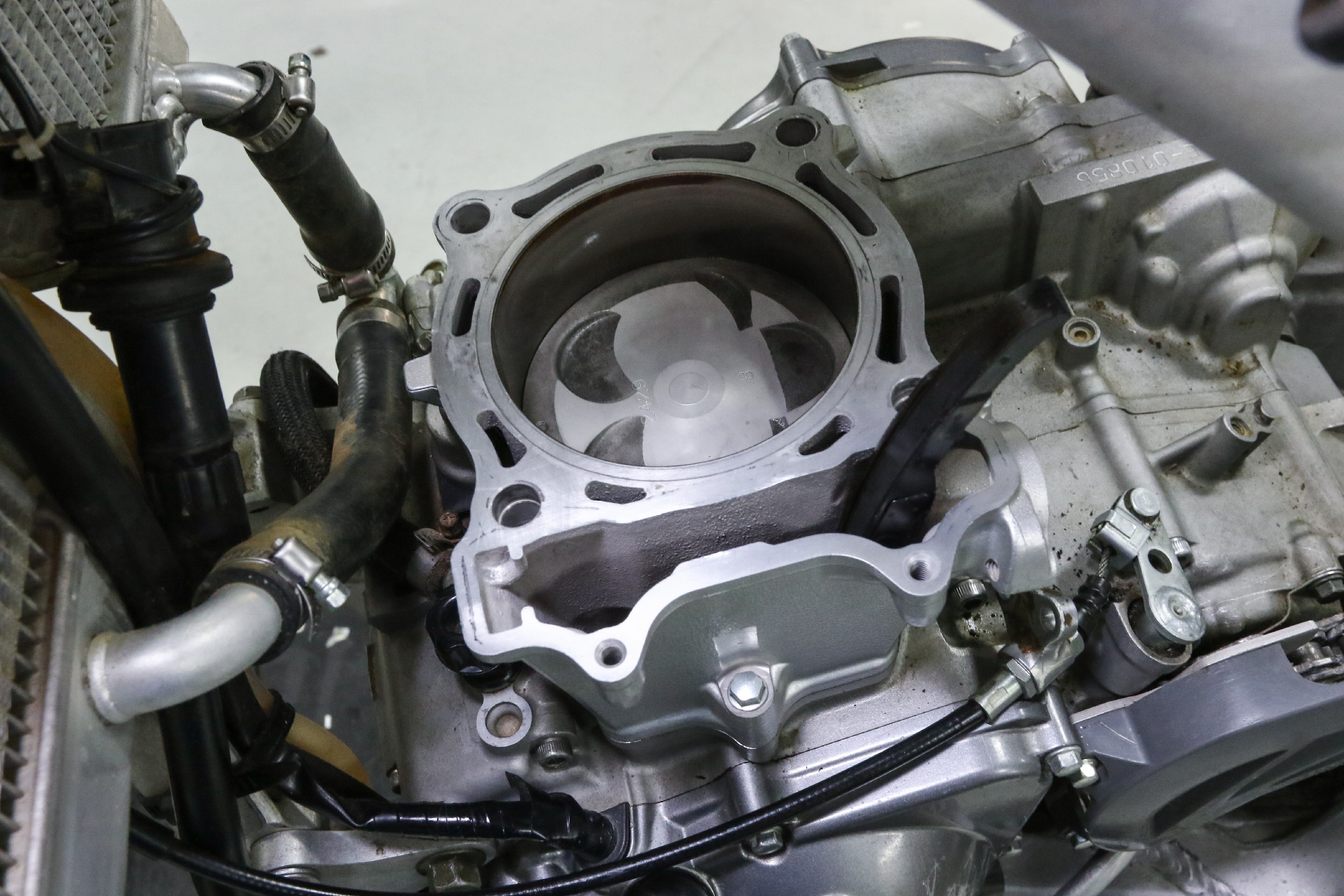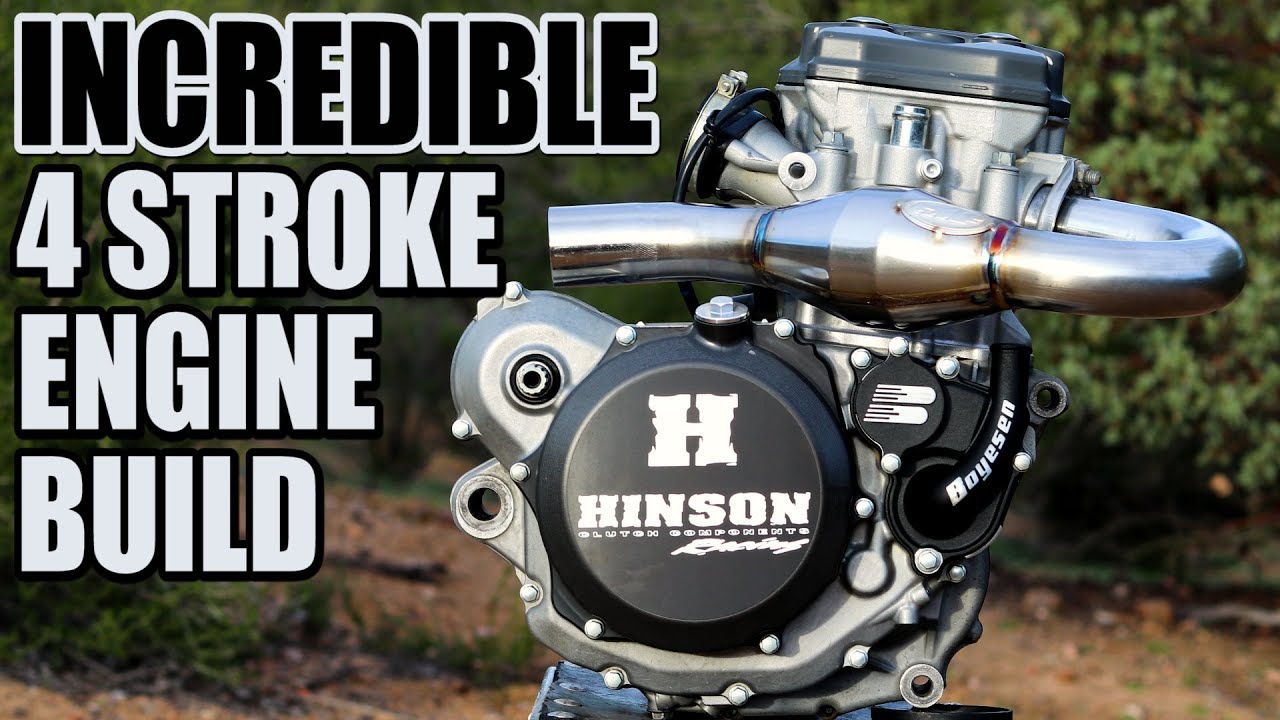To rebuild a 4-stroke dirt bike engine, follow proper disassembly and cleaning protocols, replace damaged parts, and reassemble with precision. Regular maintenance and knowledge of engine components are crucial for optimal performance.
A properly rebuilt dirt bike engine ensures efficient combustion, reduced friction, and increased power output. Whether you’re a professional mechanic or an enthusiast, this guide will outline the essential steps to successfully rebuild your dirt bike engine. Now, let’s dive into the details of each stage of the process and make sure your engine is in peak condition for your next off-road adventure.

Credit: blog.pro-x.com
Understanding The Basics Of A 4 Stroke Dirt Bike Engine
Understanding the basics of a 4-stroke dirt bike engine is essential before attempting to rebuild one. The engine operates based on the principles of intake, compression, power, and exhaust strokes. Each stroke serves a specific function in the engine’s operation.
Let’s delve into the components and their functions within the dirt bike engine:
| Component | Function |
| Piston | Moves up and down within the cylinder, transferring power to the crankshaft. |
| Cylinder | Holds the piston and houses the combustion process. |
| Valves | Control the flow of intake and exhaust gases. |
| Spark Plug | Ignites the air-fuel mixture, initiating combustion. |
| Camshaft | Regulates the timing and duration of the valve openings. |
| Fuel System | Supplies fuel to the engine for combustion. |
Rebuilding a dirt bike engine becomes necessary when specific issues arise, such as excessive wear, poor performance, or complete engine failure. By understanding the inner workings of a 4-stroke engine and the functions of its components, you can successfully rebuild a dirt bike engine and restore its optimal performance.
How to Rebuild a 4 Stroke Dirt Bike Engine: Step by Step Guide
Preparing For The Rebuild
To rebuild a 4 stroke dirt bike engine, it is crucial to properly prepare for the rebuild process. This begins with gathering the necessary tools and equipment. Key tools include socket wrenches, torque wrenches, and a piston ring compressor. Make sure you have clean rags, a parts tray, and an engine stand to hold the engine during disassembly.
Once you have the tools, the next step is to disassemble the engine. Start by removing the cylinder head and the carburetor. Take caution when removing the crankshaft as it can be delicate. Thoroughly clean each component as you remove it to prevent any dirt or debris from damaging the engine during reassembly.
After disassembling everything, inspect each component for any damage or wear. Look for signs of cracks, excessive wear, or any other issues that may require replacement. Pay close attention to the piston, connecting rod, valves, and all gaskets.
Based on your inspection, order the required replacement parts. This may include new pistons, valves, gaskets, or other components that need to be replaced. It is essential to use high-quality parts to ensure the durability and performance of the rebuilt engine.
Cleaning And Preparing The Engine Components
Properly cleaning the engine parts is a crucial step in rebuilding a 4 stroke dirt bike engine. Start by removing old gaskets and seals, ensuring a clean surface for reassembly. Inspect and clean the pistons, valves, and crankshaft, checking for any signs of wear or damage. Use a degreaser or solvent to thoroughly clean the components, removing any dirt or debris.
When choosing lubricants and sealants, it’s important to select the right ones for your specific engine and its requirements. Refer to the manufacturer’s specifications or seek professional guidance to ensure you use the correct products. Applying the appropriate lubricants and sealants will help protect and maintain the longevity of your rebuilt dirt bike engine.
Reassembling The Engine Components
Reassembling the engine components is a crucial stage in rebuilding a 4 stroke dirt bike engine. It involves carefully assembling the pistons, valves, and crankshaft to ensure proper functioning. Each component should be installed with precision and attention to detail.
Installing new gaskets and seals is essential to prevent any leakage or damage. They need to be correctly positioned and secured to provide a tight seal.
Properly torquing the bolts and fasteners is necessary for the stability and integrity of the engine. Each bolt must be tightened to the specified torque to avoid any issues.
Checking for proper alignment of all components is vital to ensure smooth operation. Misalignment can lead to performance issues and potential damage.
Adjustments, Tuning, And Final Checks
Setting the proper valve clearance is essential when it comes to rebuilding a 4-stroke dirt bike engine. Ensure that the valves are adjusted correctly by following the manufacturer’s specifications. Adjusting the **carburetor** and fuel mixture is another necessary step. Make sure the fuel and air ratio is balanced for optimal engine performance.
Checking the ignition timing is crucial to ensure that the spark plug fires at the right moment. This can be done using a timing light to determine if adjustments are needed. Lastly, performing a compression test will help identify any issues with the engine’s internal components, such as worn piston rings or cylinder walls. By following these adjustment, tuning, and final checks, you can rebuild a 4-stroke dirt bike engine successfully.
Proper Break-In Procedure
Proper break-in procedure is crucial when rebuilding a 4 stroke dirt bike engine. It ensures optimal performance and longevity of the engine. Following the manufacturer’s recommendations is the first step to a successful break-in. These guidelines provide specific instructions on oil types, rev limits, and riding conditions during the break-in period. It is important to adhere to these instructions to prevent any damage to the engine.
During the break-in period, monitoring the engine’s performance is essential. Regularly check for any unusual noises, vibrations, or leaks. If any issues are detected, it’s important to make necessary adjustments. This can involve changing the oil, adjusting the carburetor, or checking the valves.
By properly following the break-in procedure and monitoring the engine’s performance, you can ensure that your rebuilt 4 stroke dirt bike engine performs at its best and lasts for a long time.
Maintenance Tips For A Rebuilt Engine
Proper maintenance is crucial for a rebuilt engine to ensure optimal performance and longevity. Here are some essential tips to keep in mind:
- Perform regular oil and filter changes to keep the engine lubricated and prevent debris from causing damage.
- Clean and inspect the air filter regularly to ensure proper airflow and prevent dirt and dust from entering the engine.
- Monitor engine coolant levels to prevent overheating and ensure efficient cooling.
- Regularly check for oil and coolant leaks, as these can indicate potential issues that need to be addressed promptly.
By following these maintenance tips, you can keep your rebuilt 4 stroke dirt bike engine in top condition and enjoy reliable and powerful rides.
Troubleshooting Common Issues
The first step in rebuilding a 4-stroke dirt bike engine is troubleshooting common issues. Understanding the symptoms of potential problems is crucial in identifying the specific issue at hand. For example, if the engine is not starting or running properly, it could indicate a fuel delivery problem, ignition issue, or a faulty spark plug. Once the problem is identified, it is essential to address it effectively.
This may involve cleaning or replacing certain components, adjusting settings, or checking for any loose connections. It is also advisable to consult expert advice and forums for possible solutions. These platforms provide valuable insights and guidance from experienced riders and mechanics who have encountered similar issues in the past. By following these steps, you can effectively troubleshoot and resolve common problems in a 4-stroke dirt bike engine.
Safety Precautions
When it comes to rebuilding a 4 stroke dirt bike engine, safety should always be a top priority. Wearing the proper protective gear is essential to protect yourself from potential hazards. This includes a helmet, goggles, gloves, and sturdy footwear. Additionally, it is important to use caution when working with hot engine components to avoid burns. Follow the manufacturer’s safety guidelines for the specific model of your dirt bike engine.
These guidelines are designed to keep you safe and ensure a successful rebuild. However, if you are unsure about any aspect of the process, it is best to seek professional assistance. A trained mechanic can provide guidance and expertise to help you complete the rebuild safely.
Frequently Asked Questions Of How To Rebuild A 4 Stroke Dirt Bike Engine
How Often Should I Rebuild A 4 Stroke Dirt Bike Engine?
It is recommended to rebuild the engine every 50-100 hours of riding, depending on the bike’s usage and maintenance. Regular inspections, oil changes, and proper cleaning can extend the intervals between rebuilds and ensure optimal performance and longevity of your dirt bike engine.
What Are The Signs That My 4 Stroke Dirt Bike Engine Needs A Rebuild?
If you experience decreased power, excessive smoke, oil consumption, or knocking noises, it could indicate that your dirt bike engine needs a rebuild. Also, watch out for oil leaks, overheating, and difficulty starting the bike. These symptoms should not be ignored and require immediate attention.
Can I Rebuild A 4 Stroke Dirt Bike Engine Myself Or Should I Hire A Professional?
While rebuilding a dirt bike engine requires advanced mechanical skills, proper tools, and knowledge of engine components, some experienced riders can tackle the project themselves. However, it is recommended to hire a professional if you lack experience or confidence, as any mistakes can lead to costly damage or risk your safety.
Conclusion
Rebuilding a 4-stroke dirt bike engine is a complex task that requires both knowledge and skill. By following the step-by-step process outlined you can ensure the successful restoration of your engine. Remember to pay attention to details, use quality parts, and take your time throughout the process.
With patience and dedication, you’ll have your dirt bike engine running smoothly and efficiently in no time. Happy riding!

